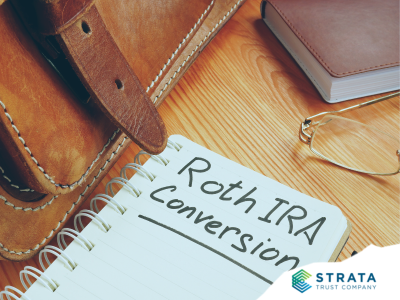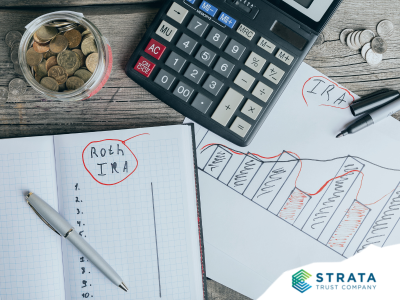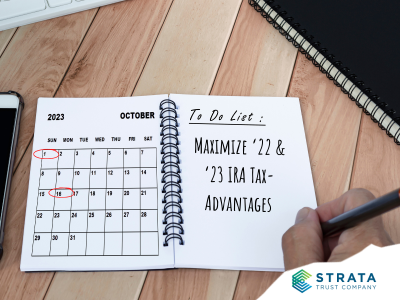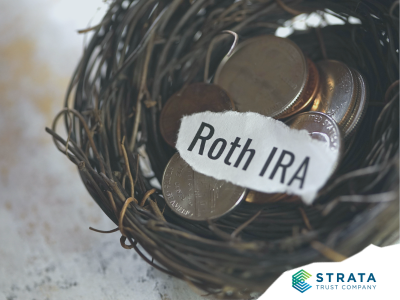Converting from a Traditional IRA to a Roth IRA can be a great way to jump-start your Roth IRA savings. Conversions involve moving (typically) pre-tax Traditional IRA assets into a Roth IRA and paying taxes on these assets. Future growth in the Roth IRA would be potentially tax-free rather than merely tax-deferred, as it would be in the Traditional IRA. Roth IRAs can provide tremendous retirement savings benefits – but the decision to convert Traditional IRA assets to a Roth IRA can be a complex question that involves both practical and philosophical considerations.
Does a Roth Conversion Make Sense?
Like most important financial decisions, there are pros and cons to making a Roth conversion. As always, you should seek competent professional advice before you decide.
Philosophical considerations – Some people think that Roth IRAs are the best thing since sliced bread—and that driving as much as possible into a Roth is the way to go. Others think that you should never pay any tax before you have to. Essentially, does the benefit of long-term, tax-free growth in a Roth IRA outweigh the uncertainty of investment growth and tax rule changes? There may not be clear answers to these questions, so the decision may rest with your risk tolerance.
Practical considerations – Perhaps the most practical concern that faces those thinking about converting is this: can you afford to pay the taxes associated with the transaction “out of pocket,” or do you have to withhold from the Traditional IRA distribution in order to cover this cost?
| EXAMPLE: |
Assume that you want to convert $10,000 and you expect to be in a 20% federal marginal tax bracket. If you have $2,000 in savings earmarked for paying the tax on this conversion, you can convert the entire $10,000 without much concern. On the other hand, if you don’t have the assets to pay the tax, you may request that 20% be withheld from your $10,000 distribution. But this means that you’ll convert only $8,000—and, if you are not yet age 59½, you will normally be subject to a 10% early withdrawal penalty on the amount you withhold. |
Once you convert Traditional IRA assets to a Roth IRA, you cannot recharacterize them, or “unconvert.” So come tax time, you’ll have to ante up one way or another. Having liquid assets to pay the tax makes conversions much easier to justify.
Another hugely practical consideration is your current marginal tax rate. Although higher-income earners may have more disposable income, they will also likely be in a higher tax bracket. And the more you convert, the more income you must include on your tax return for the year, which could bump you into a higher bracket. On the other hand, if your income is lower for some reason—such as because you were out of work for part of the year or if you have more deductions—this may be a better time to convert, especially if you have the liquid assets to pay the tax.
Direct or Indirect Conversion?
The simplest way to convert Traditional IRA assets to a Roth IRA is to move the money directly. This typically involves journaling the assets internally. Assets leaving the financial organization and going elsewhere are usually sent electronically (but a check could be cut to the financial organization for the benefit of the IRA owner). Alternatively, the IRA owner could request a distribution from the Traditional IRA and place the assets in the Roth IRA within 60 days. In this case, the IRA owner should clearly indicate that the transaction is a conversion.
However the conversion is handled, it is reported as a distribution on IRS Form 1099-R and as a conversion (in Box 3) on IRS Form 5498. IRA owners must account for conversions by attaching IRS Form 8606 to their federal tax return.
The Five-Year Rule for Conversions
In addition to these rules, there is also a five-year waiting period in certain conversion contexts, as explained in our recent article, Roth IRAs: The Five-Year Rule for Qualified Distributions. This period is sometimes called the “five-year recapture period,” but may also be known by other names. Congress created this rule to plug a loophole that could have allowed those under age 59½ to avoid the 10% early distribution penalty tax by converting assets and then taking a distribution from the Roth IRA.
| EXAMPLE: |
Sarah, age 40, needs to take a distribution from her Traditional IRA but understands that she’ll have to pay an additional 10% penalty on top of the income tax. Thinking that after-tax contributions withdrawn from a Roth IRA are not normally subject to the 10% penalty, she converts the amount she needs to a Roth IRA, hoping that by withdrawing those funds from the Roth IRA, she’s just figured out how to get around the penalty tax. |
Unfortunately for Sarah, Congress closed that loophole by changing the rule on assets that are converted to Roth IRAs. For five taxable years (beginning January 1 of the year of the conversion), converted assets are subject to the 10% penalty as if they were being distributed from a Traditional IRA. So those under 59½ (and who cannot use any other penalty exception) cannot avoid the 10% penalty tax simply by converting and then distributing the converted Roth assets; they must wait for five taxable years for that penalty to “expire.”
Additional Resources
Remember that keeping assets in your Roth IRA—and enjoying potentially tax-free growth—is the main benefit of investing your assets in a self-directed Roth IRA. Converting Traditional IRA assets into a Roth IRA might make sense for you, but this move works best only if you keep the assets working for you in the Roth IRA.
Our Roth IRA Conversion Calculator can help you visualize the monetary differences between holding your savings in a Traditional IRA versus converting your savings to a Roth IRA. To learn about the process of a direct transfer, visit our Fund Your Account page. If you have any questions regarding Roth conversions, contact our self-directed IRA experts.


















